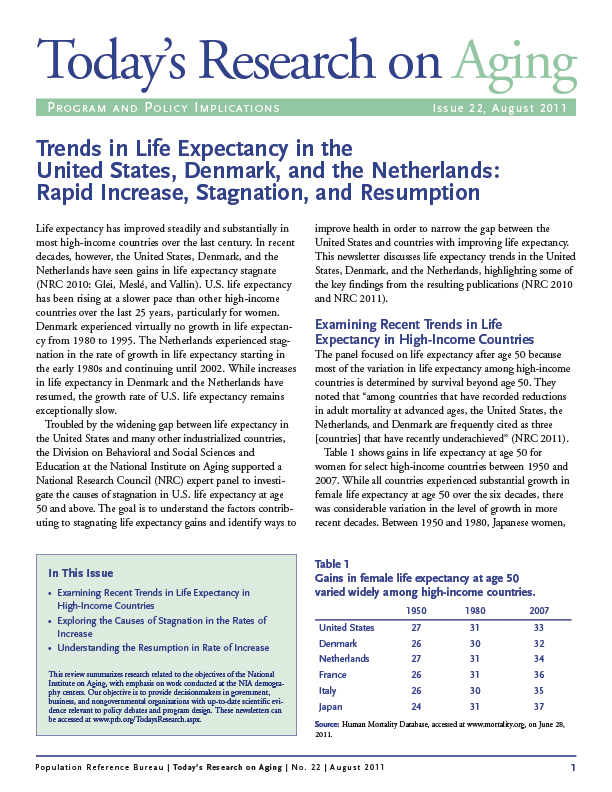
Trends in Life Expectancy in the United States, Denmark, and the Netherlands: Rapid Increase, Stagnation, and Resumption
Life expectancy has improved steadily and substantially in most high-income countries over the last century. In recent decades, however, the United States, Denmark, and the Netherlands have seen gains in life expectancy stagnate. U.S. life expectancy has been rising at a slower pace than other high-income countries over the last 25 years, particularly for women. Denmark experienced virtually no growth in life expectancy from 1980 to 1995. The Netherlands experienced stagnation in the rate of growth in life expectancy starting in the early 1980s and continuing until 2002. While increases in life expectancy in Denmark and the Netherlands have resumed, the growth rate of U.S. life expectancy remains exceptionally slow.
Troubled by the widening gap between life expectancy in the United States and many other industrialized countries, the Division on Behavioral and Social Sciences and Education at the National Institute on Aging supported a National Research Council (NRC) expert panel to investigate the causes of stagnation in U.S. life expectancy at age 50 and above. The goal is to understand the factors contributing to stagnating life expectancy gains and identify ways to improve health in order to narrow the gap between the United States and countries with improving life expectancy. This newsletter discusses life expectancy trends in the United States, Denmark, and the Netherlands, highlighting some of the key findings from the resulting publications.
Resources
View All
PopWire: Child Well-Being in Developed Countries
(February 2007) The Netherlands ranked at the top of 21 countries, followed by Sweden, in the United Nations’ first comprehensive assessment of child well-being in developed nations, which was released this month. Great Britain ranked at the bottom, just after the United States.
Child Poverty in Perspective: An Overview of Child Well-Being in Rich Countries, was published by the United Nations Children’s Fund (UNICEF) and included countries from the Organisation for Economic Cooperation and Development. The topic areas that formed the basis for the assessment included material well-being, health and safety, education, peer and family relationships, behaviors and risks, and young people’s ratings of their own well-being.
The authors acknowledged gaps in the data, especially on children’s mental health and emotional well-being; age and gender differences; and participation of 3- and 4-year-olds in early childhood education. They noted that no country ranked in the top third for all six areas, and called their report card “a broad and realistic guide to the potential for improvement in all OECD countries.”
The report is available at: www.unicef.org/media/files/ChildPovertyReport.pdf.
D’Vera Cohn, PRB Senior Editor

 ">
">